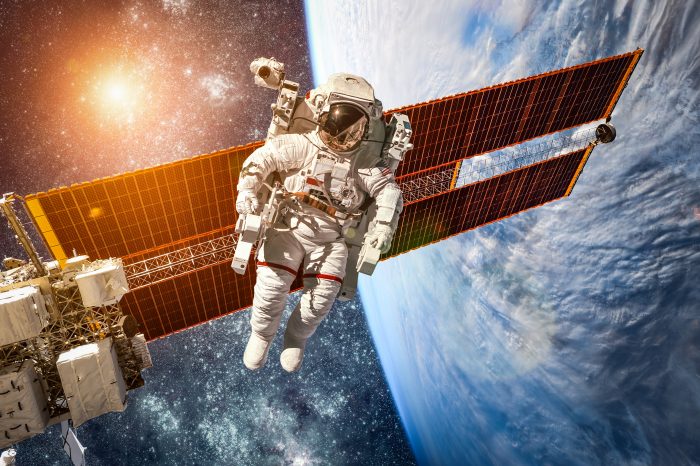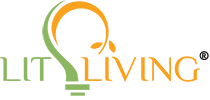
Astronauts In Space Couldn’t Sleep, Here’s How It Impacts You
Lighting affects life on Earth and in space.
Come aboard the International Space Station (ISS) and see how lighting affects human performance. Earth applications and improvements can be drawn from this innovative advancement.
The ISS orbits Earth approximately every 90 minutes; therefore, everyone onboard experiences sixteen sunrise and sunsets.The fast changes in days are consumed with demanding work schedules, night shifts, and irregular sleep cycles.
Here are some insights about the lighting research history and how it has advanced lighting technology on Earth:
International Space Station Project Overview
Modern advances in lighting technology have been issued onboard the ISS by George C. Brainard. George C. Brainard, director of Jefferson’s Light Research Program for over 30 years advanced innovative lighting solutions within the spacecraft. Brainard is an expert in the effects of light on neuroendocrine physiology and studies circadian regulation in humans.
Focusing on the lack of sleep and how it affects the overall performance of astronauts, Brainard and his team wanted to improve the lighting on the ISS as it greatly affects astronauts. With hope of giving astronauts regularity, minimizing sleep deprivation, and improving alertness during working hours, the light used aboard the ISS was expertly studied and revised.
Light Cycles on the International Space Station
Human beings operate on a 24-hour circadian rhythm here on Earth, meaning light helps create alertness and productivity when it is time to get up in the morning and darkness signals it is time to sleep. However, in space, this rhythm is altered because a day transpires more rapidly.

Astronauts need to be awake and alert in case of an emergency or the need to dock abruptly. Sometimes this can happen in the middle of a sleep cycle and because the days are irregular, astronauts and crew members are unable to get recovery sleep.
The bottom line is that astronauts do not get enough sleep, no matter how hard they try. Most schedules allot for 8.5 hours of sleep, but it is common for most to get less than 6 hours. Experiencing insomnia, astronauts often turn to supplements and sleeping pills to aid.
How Light Affects Human Performance
Evidence supports the fact that lighting influences sleep, alertness, and overall productivity.
Without the proper amount of light, the human body fails to function properly. This extends to artificial light and the impact it has on the circadian rhythm. Not receiving enough sunlight can be damaging to overall health, impact the amount of sleep, and lead to serious health concerns including: diabetes, anxiety, depression, and even some cases of autism.
In space, the differences in sleep-wake cycles and demanding schedules make it difficult to maintain healthy habits and hormonal regulation, which ultimately impact performance. Using pharmaceuticals while on a space mission can impact the safety of those on board and on the space mission.
The Solution
Brainard was on a mission to see which light type would provide the best light therapy for astronauts.
Through studying different light tones and the effects within tight quarters and with countless volunteers, Brainard found blue light suppresses melatonin levels and could draw insights into which solution would be the most useful on board the spacecraft. His research concluded all lights need to fall under white spectrum with variation in tones, but include a specific blue light in space as it has significant health advantages.
The lighting in space, specifically on the ISS, was updated to allow astronauts and crew members to adjust the lighting brightness and intensity according to the time of day. Being mindful of the tasks to be completed aboard the spacecraft, task lighting was also evaluated.

Switching out the lamps on the ISS required tailored measurements and unique designs, as it is not done often and the lamp has to be an exact fit.
With three different color temperatures, astronauts can ease into the different times throughout their routine – the light is brighter with slight blue tones in the morning and turns warmer with red intensities in the evenings. Improving the environment on the spacecraft for sleep and productivity, the ISS is working to restore the circadian rhythm of all astronauts and increase lighting options for Earth life.
Earth Applications
Brainard’s research and expert knowledge in lighting and how it affects human health has gleaned insight into how to change lighting here on Earth. Through the advances in technology and lighting specifics, different lighting options are available.
All living organisms have an internal clock, circadian rhythm, which help them become alert and accomplish specific tasks. The body recognizes darkness and specific hormones are released to help prepare the body to sleep. A similar process is completed when the sun rises and it is time to get up.
When humans are exposed to artificial lights and spend significant time indoors, they do not get the required amount of light from the sun, just like in space. With a lack of sunlight and vitamin D, the internal clock is altered. When the rhythm is irregular, it makes it difficult to sleep and perform well.
Some researchers and studies refer to a “constant twilight” state, which is when humans experience neither day or night but are stuck somewhere between. This can happen frequently as artificial light allows humans to have some type of light around the clock, regardless if the sun is up or down. Not allowing the body to follow the pattern of the sun and naturally arise or go to sleep has led to decreased sleep, mood, mental performance, and increased health concerns.
Installing different lighting tones, fixtures, and solutions throughout your home to mimic the sun can help you receive more sleep, increase alertness and productivity, and improve overall wellness.
